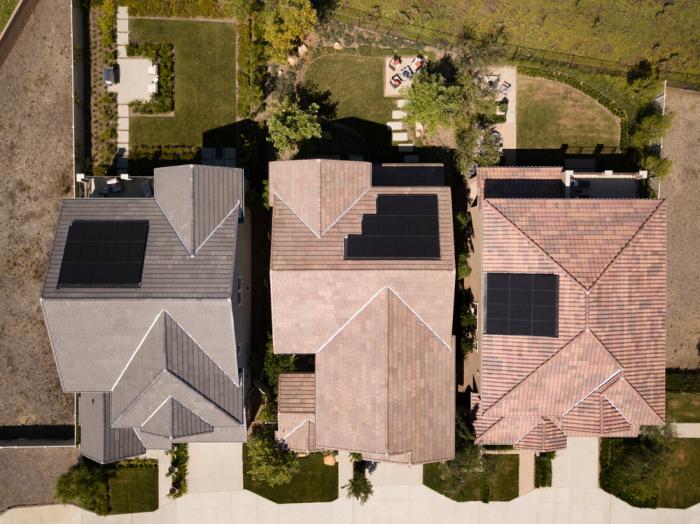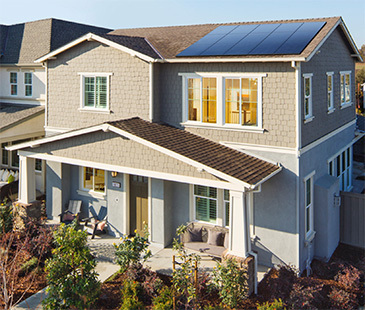
Decades of relying on fossil fuels has brought about a slow but sure uptick in natural disasters. Even the recent upsurge in California wildfires, while an annual occurrence, have been attributed to climate change. The frequent reports of extreme weather seem to point to the common denominator of a planet in crisis. With a problem that feels so big, what can be done?
Like any issue that seems overwhelming, the best way to approach it is one step at a time. Mitigating climate change starts on a local level. Solar communities are increasing in number across the U.S., setting an example of sustainability along the way. California, a long-time leader in green building, hosts many of these communities. Much of this is due to the state’s Title 24 energy code which requires all new homes to run on solar power. This initiative can be easily seen with the state’s multiple appearances in the 2019 Shining Cities, a report showcasing the most solar installed per capita.
Solar-powered homes help reduce strain on the grid when extreme weather hits. The current heatwave with temperatures reaching over 120° in parts of California and other areas, is a perfect example of this. Heat at that level doesn’t offer much relief, leaving residents to heavily rely on their air conditioning systems. With a constant demand on the electrical grid, utility companies like PG&E must jump into action with precautions through public safety power shutoffs. These rolling blackouts can occur for several hours at a time, leaving residents literally in the dark. That’s where solar energy comes in.
Most homes with solar power are still tied to the grid but by producing their own solar electricity, they rely significantly less on utility companies. And with additional solar battery options, that demand can be reduced even more at night or during a power outage. Solutions like SunPower® SunVault® Storage collect excess solar electricity that isn’t consumed by the home during the day. Then, during an outage, that stored electricity can be used to power essential home appliances, including the refrigerator.*“Essential Appliances” are determined by the homeowner before installation and typically include lights, select appliances and outlets for devices. The battery storage system should not be relied upon as a power source for critical medical devices. The life of the battery storage system will vary depending on a number of factors, including: the amount of energy stored in the battery, the amount of wattage used by the appliances and electronics connected to the battery storage system, the age of the battery, the battery’s ability to recharge during daylight hours due to weather, the frequency and duration of battery usage, and other factors. Battery life will decrease with time and use. That’s because SunVault contains intelligent software that offers homeowners a choice on how to use their energy. Reducing the strain on the grid is just one reason why many states, including California, offer their own rebates and incentives on top of the federal solar tax credit (ITC).
But rebates and incentives aren’t the only way homeowners can experience savings with solar power. High-efficiency SunPower® solar systems can lead to substantially lower utility bills. Homeowners can even get an estimate by using SunPower’s savings calculator. With solar power comes both a financial and sustainable pay-off. Not only does this zero-carbon solution reduce the amount of greenhouse gasses in the atmosphere, it also gives power back to communities. And with many variables determining a community’s accessibility to power, solar energy solutions are becoming priceless.

